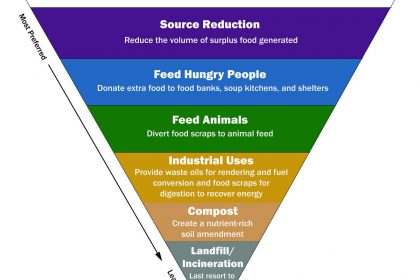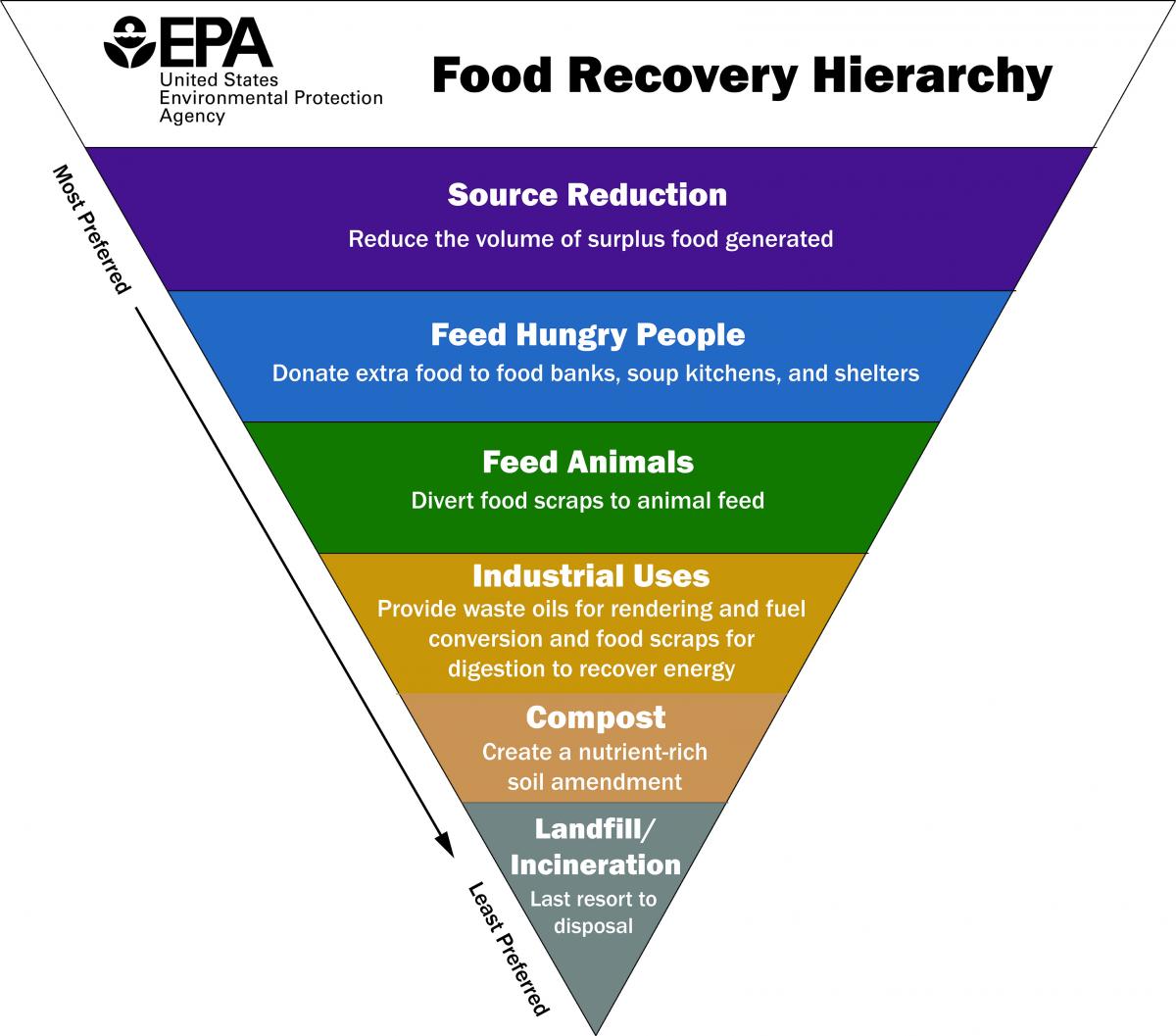
With 60,000 tons of food wasted in the United States each year, at a cost of nearly $220 billion according to ReFED, wasted food is one of the great challenges facing our nation. Wasted food makes up 21% of all landfill volume, and as it decomposes, it releases methane, a greenhouse gas 25 times more effective than carbon dioxide at trapping heat in Earth’s atmosphere. These consequences are all happening while one in seven Americans does not have enough nutritious food to eat. It’s a perfect storm of a problem, at once putting pressure on limited natural resources, straining finances, contributing to climate change, and leaving people hungry.
Wasted food is a complex challenge, both too large and too granular for government or marketplace stakeholders to tackle alone. Several states, including Connecticut, Massachusetts, Rhode Island, and Vermont, have passed legislation to encourage and/or require diversion of organic waste, but government policy often struggles to address on-the-ground practicalities in the fast-paced food marketplace. On the other side of the equation, marketplace stakeholders sometimes stumble in attempts to implement programs and systems to reduce waste. Real solutions are forged when those entities work together, connecting the policy and enforcement offered by government to the creative resilience and demand response of the marketplace.
For nearly two decades, the Center for EcoTechnology (CET) has been promoting these connections on a state and regional level through education, technical assistance, and solution-neutral facilitation across the waste-reduction hierarchy, leading to dramatic growth in the marketplace and measurable impacts on waste. CET helps connect businesses and institutions with waste haulers, compost sites, anaerobic digestion facilities, animal feed operations, food rescue organizations, and others to divert material from disposal and support a robust regional food recovery system. We identify and reduce barriers that hinder waste reduction and diversion strategies, assist businesses in designing and implementing new diversion programs, and share best practices through trainings, workshops, and other events. This spring, CET received the Environmental Merit Award from Environmental Protection Agency (EPA) New England and the Environmental Business Council of New England recognized CET’s longstanding leadership in the development of the food waste recovery marketplace in our region.
In the Bay State, CET administers RecyclingWorks in Massachusetts, a program funded by the Massachusetts Department of Environmental Protection (MassDEP), that provides technical assistance for businesses and institutions to maximize waste prevention, recycling, reuse, and food waste diversion opportunities. RecyclingWorks also assists these entities in complying with Massachusetts waste bans, including the Commercial Food Waste Disposal Ban. While we continue to work to help businesses divert wasted food for composting, feeding animals, and anaerobic digestion, recently we have focused on developing guidance related to another portion of the EPA’s Food Recovery Hierarchy: feeding people through food donation.

Last year, RecyclingWorks engaged stakeholders across Massachusetts to create food donation guidance for businesses in the state. We met with state and local health officials, food rescue organizations, and foodservice entities to create guidelines for safe and effective food donation. The Harvard Food Law and Policy Clinic (HFLPC) created legal fact sheets for Massachusetts and other states so businesses understand how liability protections, tax incentives, and date labeling laws apply to food donation. Some federal-level highlights include:
Operational Guidance: How to build relationships with food rescue organizations and follow guidelines of the retail food codes.
Tax incentives: Federal tax incentives help businesses save money by donating surplus food. Recent changes to federal tax code have expanded an enhanced deduction for food donation to apply to all businesses.
Liability Protection: Some business owners are concerned about legal liability for donated food. However, extensive legal research does not indicate even a single legal case related to food donation liability. The Bill Emerson Good Samaritan Food Donation Act offers protection to businesses that donate “apparently wholesome” food “in good faith” to non-profit organizations.
Date Labeling: Most date labeling laws are at the state rather than federal level, and many date labels do not actually correspond to food safety. This video from the HFLPC helps explain how many past-date foods are perfectly safe for human consumption. Local boards of health can provide additional guidance on what past date foods can be donated.
Food donation makes a significant impact by keeping edible food out of landfills and on the tables of the food insecure. For example, Boston Public Market contacted RecyclingWorks MA for assistance implementing food rescue and food scrap collection programs. With our help, Boston Public Market partnered with local food rescue organizations and an organics hauler for food scraps. In their first eight months of operation, the market donated 21,000 pounds of food, enough for 17,000 meals. That’s 17,000 meals feeding hungry people in the greater Boston area instead of sitting in landfills, adding methane to the atmosphere. It’s the very definition of a win-win situation.
The Center for EcoTechnology is now leveraging our food waste diversion experience to assist Connecticut businesses, thanks to support from the Fink Family Foundation, the EPA’s New England regional office, the US Department of Agricultural (USDA), Connecticut Department of Energy and Environmental Protection (CT DEEP) and other partners. Connecticut became the first state in the nation to require that food scraps produced by large generators be diverted from landfills when it passed the Commercial Organics Recycling Law in 2011, and also worked with HFLPC to produce state-focused legal fact sheets for Date Labeling Laws, Liability Protections, and Tax Incentives. CET is assisting businesses and institutions in Connecticut as they implement wasted food diversion programs.
Wasted food is a huge and daunting challenge, but it’s not an insurmountable one. Achieving the federal government’s goal of reducing food waste by 50% by the year 2030 requires the coordinated efforts of federal, state, and local governments, businesses and institutions, nonprofit organizations, and consumers. New England has emerged as a leader in this endeavor, and we provide a compelling example for the rest of the nation. Our efforts are bearing fruit; here in Massachusetts, the one-year anniversary of the Food Waste Disposal Ban brought news of more than 25,000 tons of food donated and more than 1,600 businesses and institutions diverting more than 130,000 tons of food waste to composting, animal feed, and anaerobic digestion. Our expertise and the lessons we’ve learned can be used to replicate this success nationally. As these strategies for reducing wasted food spread across the nation, we will be able to say with pride that they were first grown here in the soil of New England.
Cory Mansell is a program specialist for the Center for EcoTechnology. Contact Cory for more information about starting or expanding a program to divert wasted food from disposal at your business. Businesses located in Massachusetts can also access free assistance through the RecyclingWorks in MA hotline: (888) 254-5525.




